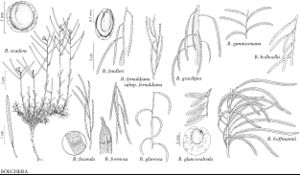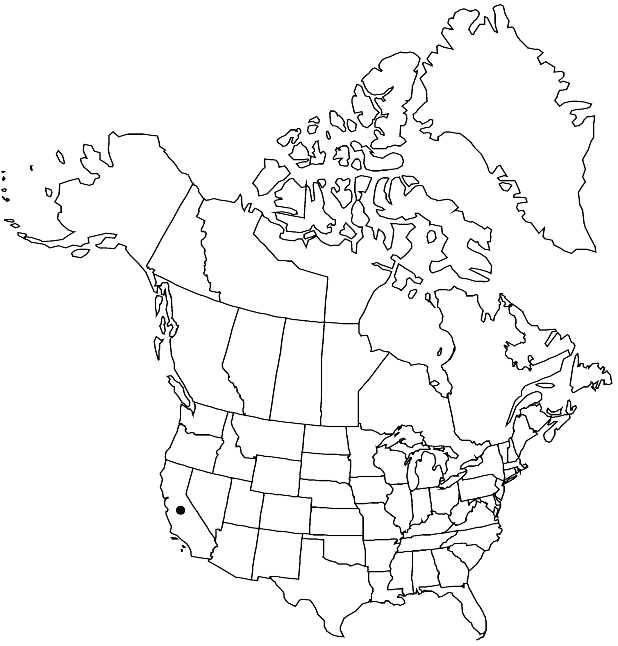Difference between revisions of "Boechera hoffmannii"
Novon 13: 386. 2003.
FNA>Volume Importer |
FNA>Volume Importer |
(No difference)
| |
Revision as of 20:22, 24 September 2019
Perennials; long-lived; sexual; caudex woody (sometimes with persistent, crowded leaf bases). Stems usually 1 per caudex branch, arising from center of rosette, often elevated above ground surface on woody base, 5–7 dm, glabrous or sparsely pubescent proximally, trichomes short-stalked, 2- or 3-rayed, 0.15–0.4 mm, glabrous or sparsely pubescent distally. Basal leaves: blade narrowly oblanceolate, 3–8 mm wide, margins coarsely dentate, ciliate, trichomes (simple and 2-rayed), to 0.6 mm, surfaces sparsely to densely pubescent, trichomes short-stalked, 2–7-rayed, 0.15–0.4 mm. Cauline leaves: 15–65, concealing stem; blade auricles 1–4 mm, surfaces of distalmost leaves pubescent. Racemes 30–70-flowered, sometimes branched. Fruiting pedicels divaricate-ascending, straight, 10–45 mm, glabrous. Flowers ascending at anthesis; sepals pubescent; petals white or pale lavender, 8–10 × 1.5–2 mm, glabrous; pollen ellipsoid. Fruits divaricate-ascending to horizontal, not appressed to rachis, not secund, usually curved, rarely straight, edges parallel, 6–10 cm × 2.5–3 mm; valves glabrous; ovules 170–220 per ovary; style 0.05–0.5 mm. Seeds biseriate, 1.2–1.6 × 0.9–1.2 mm; wing continuous, 0.1–0.2 mm wide.
Phenology: Flowering Feb–Mar.
Habitat: Sea cliff ledges and crevices of volcanic outcrop in chaparral communities
Elevation: 0-100 m
Discussion
Of conservation concern.
Boechera hoffmannii is a distinctive sexual species that appears to be restricted to Santa Cruz Island in Santa Barbara County. It is in the Center for Plant Conservation’s National Collection of Endangered Plants.
Selected References
None.

